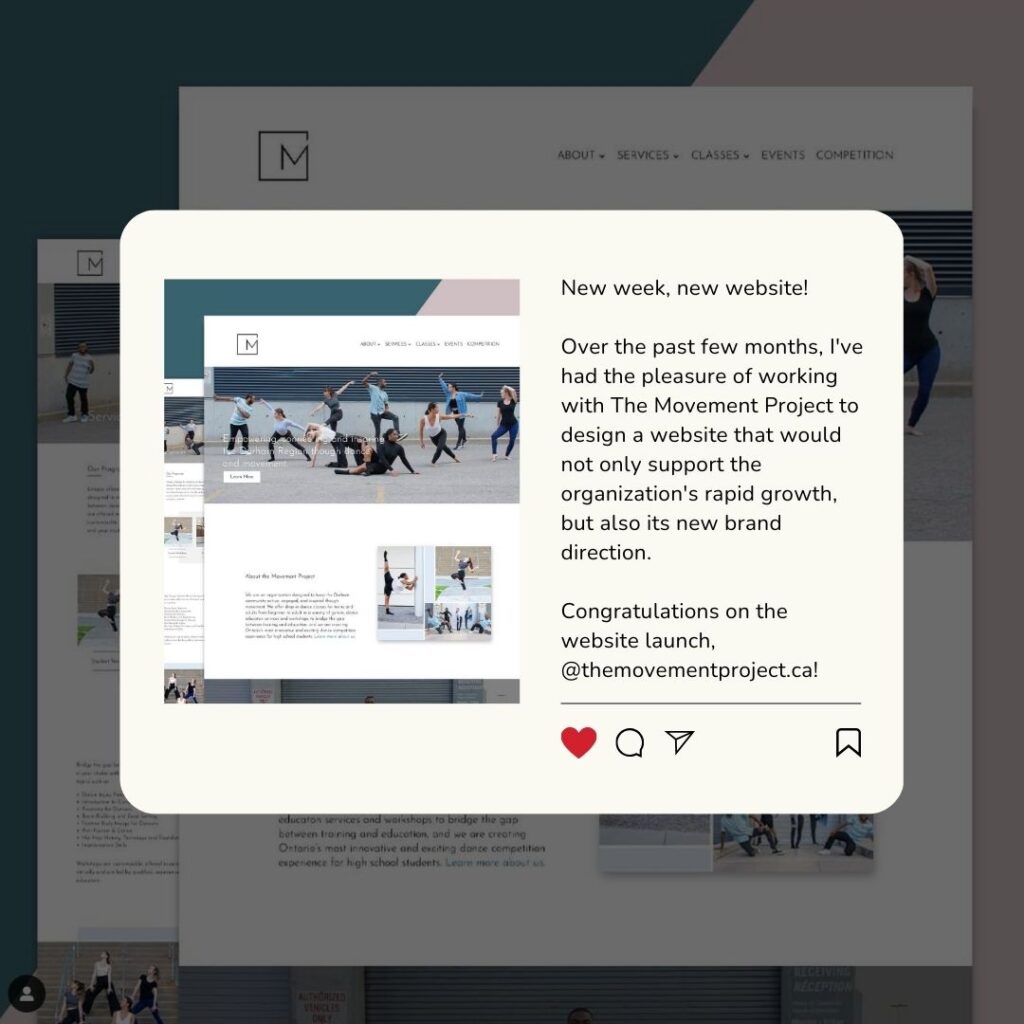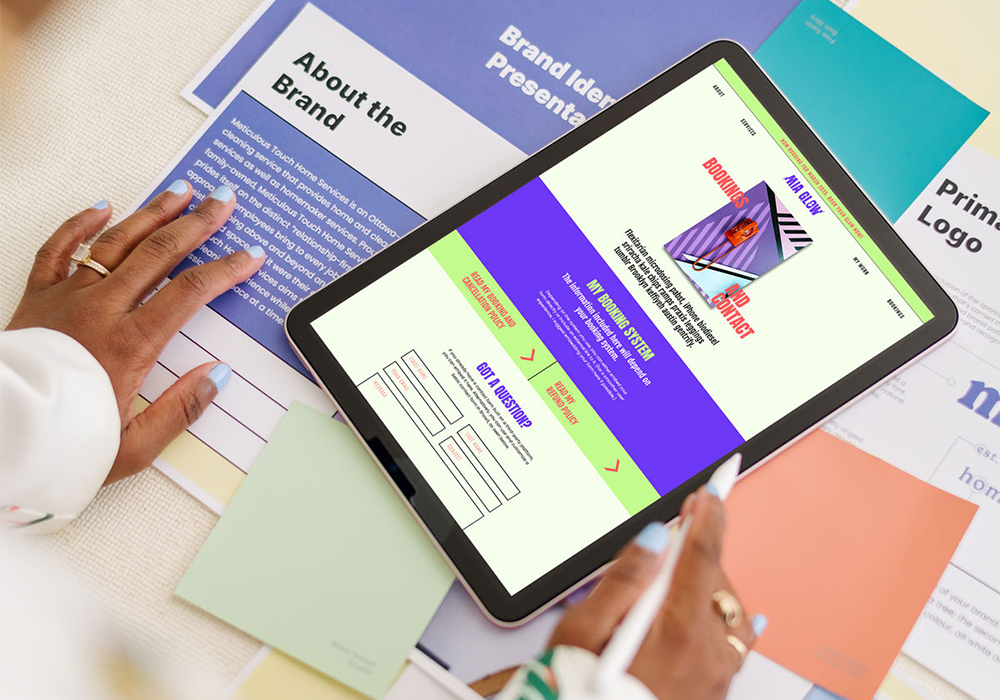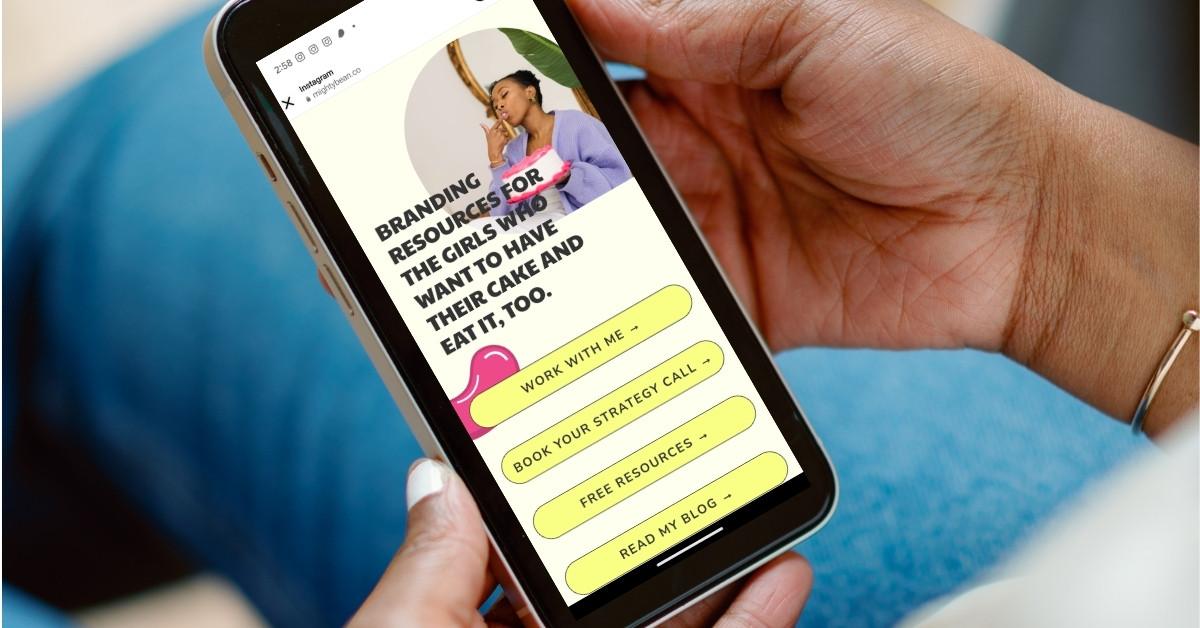I love a good launch strategy.
And not just any good old launch strategy — a strategic and well-planned launch strategy. Why? Because they can have a huge impact on your side hustle by giving you more opportunities to reach your audience and influence them to take action.
In this blog post, I’ll be sharing some highlights from a recent 1:1: strategy session that I had with a newbie side hustler (who, for the sake of our story, we’ll call Leslie) to help you plan the ultimate launch strategy for your side hustle.
But first things first:
1. It’s important to know what a launch strategy is (and isn’t).
Leslie booked her 1:1 session because she wanted me to weigh-in on the launch strategy she’d put together for her side hustle. She’d been working on it for weeks behind the scenes, and with the big reveal just around the corner, she was terrified of launching to crickets and having all her hard work go to waste.
But within a few minutes of listening to Leslie walking me through her strategy, two things became super clear to me:
On the one hand, she had obviously put a lot of thought into “day one” of her side hustle launch; she had secured her social media handles, written and scheduled a bunch of posts and even built a Linktr.ee as a temporary website.
But on the other hand, she hadn’t given much thought beyond that.
Here’s the thing: A lot of people think about a launch strategy as singular, one-day event. They see them as these big, momentary splashes and then — just like that — *snaps fingers* — they’re over.
Admittedly, I’ve been guilty of this myself. I can think of at least one or two times that I’ve launched a new project in my portfolio with a single measly Instagram post, expecting it to somehow boost traffic to my website and generate new leads for my business.

A real example of what I once thought a launch strategy was: a single Instagram post.
But the truth is — and I know it now from personal experience — a true launch should be an ongoing rollout that takes place over several days or even months. (Yep, you read that right. Months.) And ideally, it should be split into three phases (pre-launch, launch, post-launch), with specific goals, sub-strategies and tactics outlined for each. Here are a few examples:
Pre-launch
- Build awareness and generate buzz by creating teaser content (e.g., countdowns, sneak peeks, behind-the-scenes posts, etc.)
- Grow your audience: Attract new followers, subscribers and leads by offering free resources or exclusive offers.
- Establish credibility by share client testimonials and case studies.
Launch
- Drive sales or signups by offering limited-time offers.
- Encourage sharing. Use referral incentives or create shareable content (e.g., branded hashtags or giveaways) to expand your brand’s reach.
- Drive excitement through interactive content such as online polls and Q&As.
Post-launch
- Build loyalty and brand affinity by following up with onboarding emails, tutorials or exclusive perks.
- Use surveys, reviews or direct messages to gather feedback to better understand what worked well (and what might need improvement!)
- Keep the momentum going by rolling out related offers or showcasing success stories from your launch.
By splitting your wider launch strategy into sub-strategies with specific goals, not only is it much easier to plan, but it’s also easier to measure — more on that below!
2. Set specific goals that you can measure (and adjust) as you go.
Your launch strategy should include clear and specific goals that you can quantify. This is important because it will allow you to tangibly measure the success of your launch as you move through each stage. By measuring as you go, you can get a solid understanding of what, if any, improvements you can make to your strategy in the next phase.
So, looking back at the examples above, here’s how they might look if you were to make them measurable:
Pre-launch
- Build awareness and increase engagement by 25% by creating teaser content (e.g., countdowns, sneak peeks, behind-the-scenes posts, etc.).
- Grow your audience by 1,000 across new followers, subscribers and leads by offering free resources or exclusive offers.
- Establish credibility by getting and sharing at least 10 client testimonials and case studies before launch.
Launch
- Reach a sales goal of $10,000 or land 200 new subscribers within the first 72 hours of launch.
- Encourage sharing. Generate at least 25 user-generated posts or shares using your branded hashtag.
- Get at least 200 responses to your online poll.
Post-launch
- Build loyalty and brand affinity. Achieve at least a 50% open rate and a 10% click-through rate on your post-purchase email sequence.
- Collect at least 50 client survey responses or 20 reviews within the first two weeks post-launch.
- Keep the momentum going by landing at least 50 additional conversions through post-launch offers.
3. Think of your launch strategy as a pleasant surprise — not a complete shock.
Now, let’s get back to Leslie.
Another thing that stood out to me about her launch strategy was that she was planning to unveil her side hustle on social without warning and then just as quickly disappear, hoping her small stream of day one posts would be enough to move the needle. From the outside looking in, it almost seemed as though she was treating her side hustle like an unwanted surprise.
When it comes to social media, surprises are a huge gamble (unless you’re Beyonce, of course). Why? Because algorithms move so fast, and just as quickly as you’ve put something out there — poof — it’s gone. By warming up your audience at least six weeks in advance (your pre-launch strategy), you can plant seeds inside your target client’s mind about working with you or trying your products, and start to remove any barriers they might have.
4. Be clear about what action you want your audience to take, and tell them.
Leslie had all her social posts ready to go, but after reading a few of them, I wasn’t exactly sure where she wanted her audience to go or what she wanted them to do. There was a lot of language and messaging about what her side hustle was, the inspiration behind it and what she had to offer in terms of her services, but not very much beyond that.
What she was missing was a clear call to action (a “CTA” for short) — a direct prompt encouraging her audience to take a specific step. Whether you’re familiar with this term or not, you’ve definitely come across (and have likely even been influenced by) a call to action; you often see them as one-liners like “Subscribe here!” or “Visit my website!” at the end of social media posts.
Although your CTA will likely change depending on the stage of your launch strategy, it should always be there, and it should always be clear. Otherwise, you risk your followers scrolling by your posts without taking any action.
5. Say it again and again and again.
While we all hate repeating ourselves, when it comes to launching your side hustle, a new service or a new product, there’s really no way around it.
Your launch strategy should be built around two to three key takeaways that you want to leave your followers with, and you should be repeating those messages every chance you get. Why? Because people typically need to hear or see something five to seven times before they actually remember it. (Crazy, I know.) So, as much as you may think you sound like a broken record, chances are there’s someone in your audience who’s digesting your message for the first time.
Key takeaways VS call to actions
One important thing to know is that your key takeaways aren’t the same as your calls to action. Key messages are often contextual and persuasive, and they communicate a core idea or value that you want your audience to understand and remember. On the other hand, a call to action is a direct prompt and usually much shorter. Here’s an example of both in action:
- Key takeaway: Elevate your online presence with a professional and scroll-stopping website that shows off your influence and connects directly with your audience.
- Call to action: Book your project today!
Thoughts?
Have any questions or thoughts about this post? Drop a comment below and let me know what you think!
And of course, if you need help planning a launch strategy for your side hustle, I’m just a call away. Book your 1:1 side hustle strategy call with me today.






+ show Comments
- Hide Comments
add a comment →